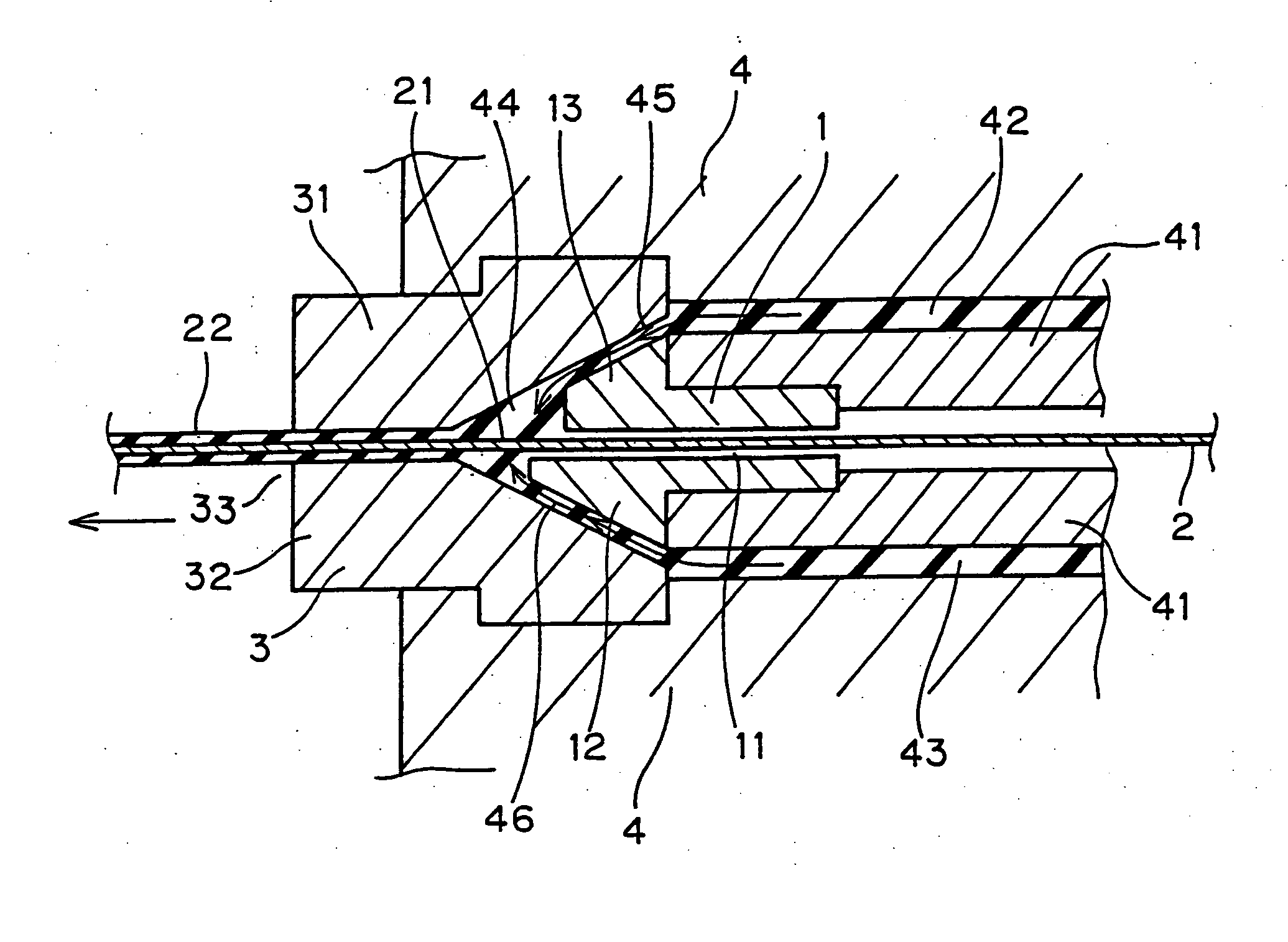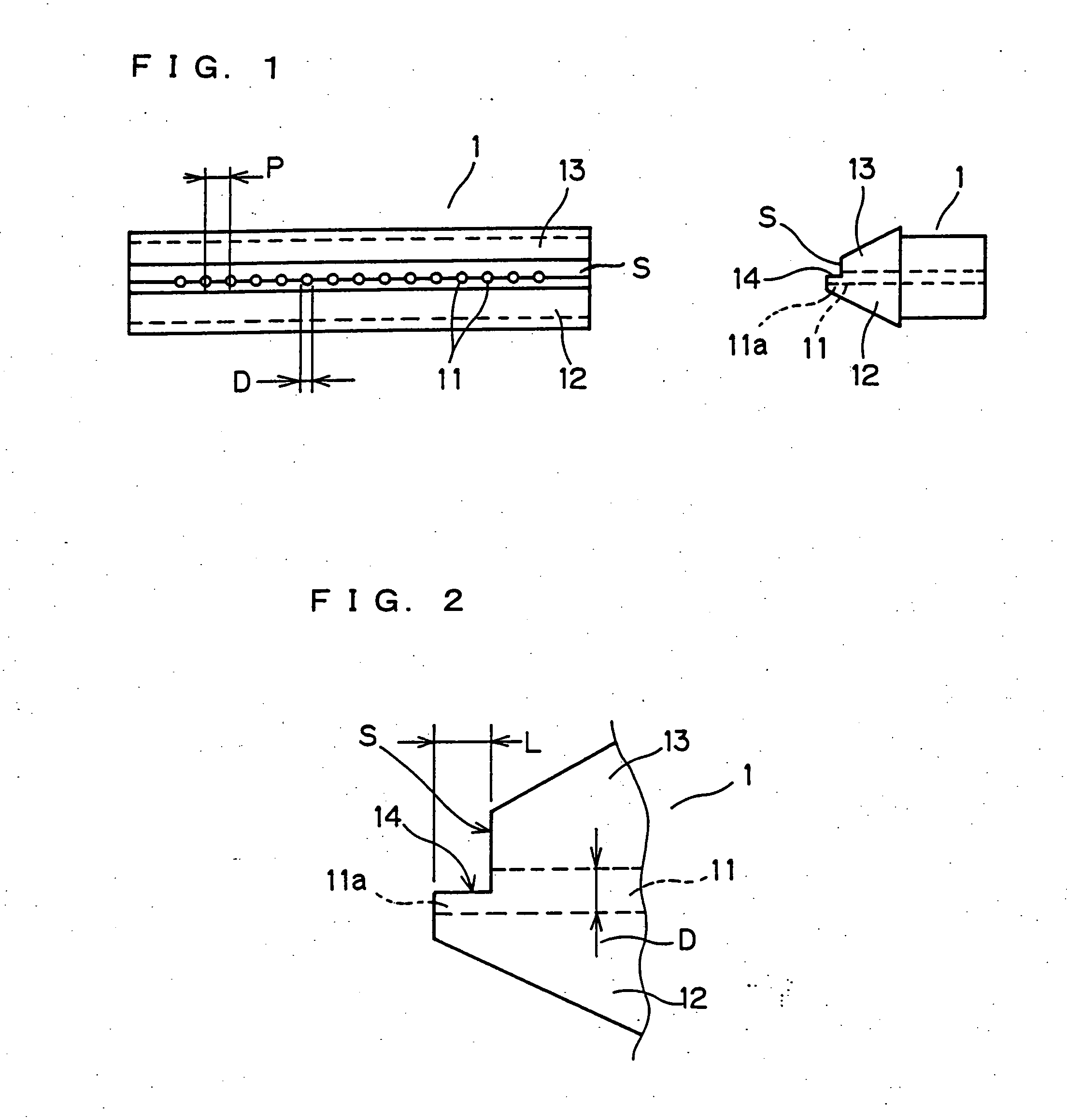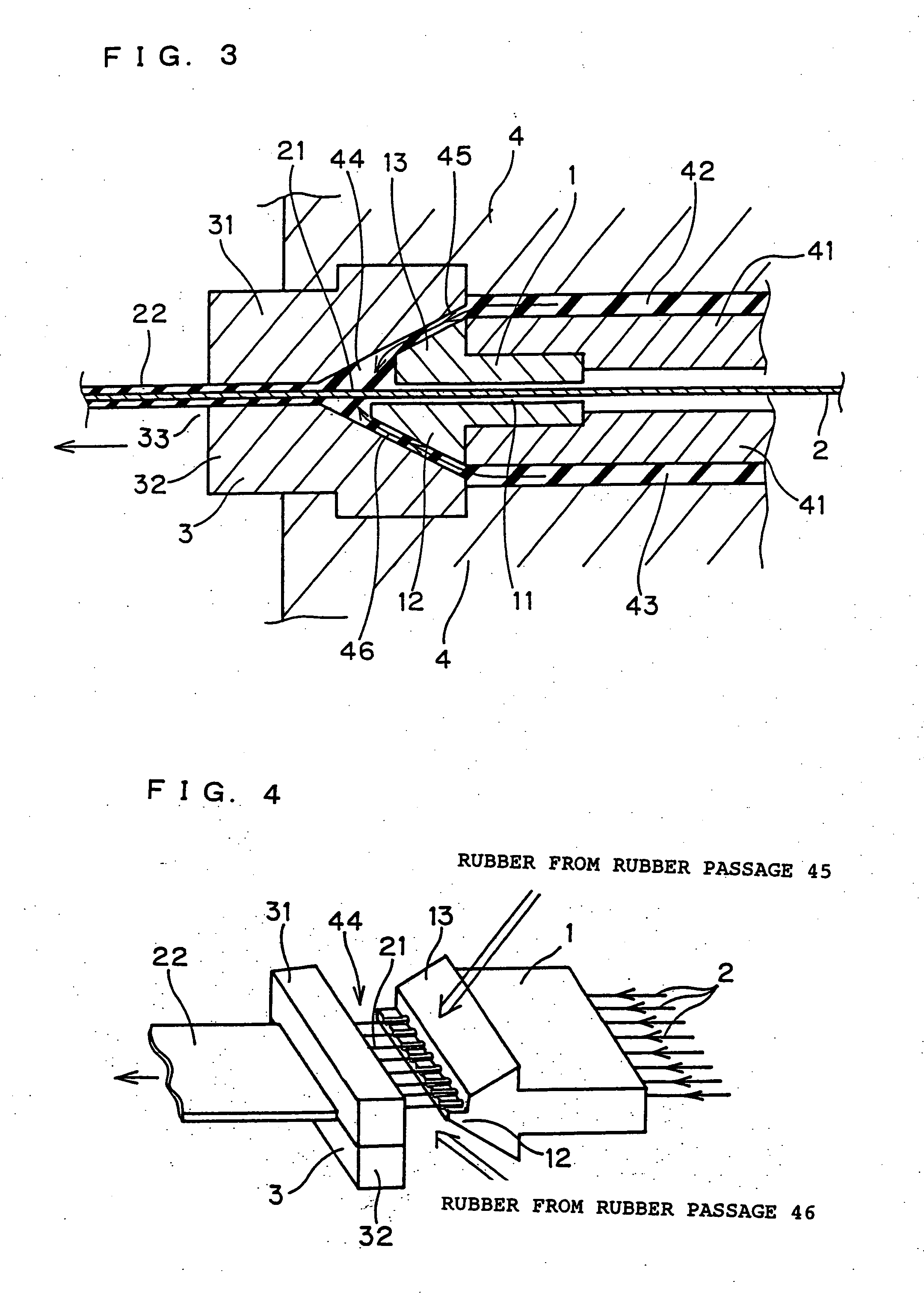Die insert for extruder
a technology of extruder and die insert, which is applied in the field of die insert for extruder, can solve the problems of deterioration of workability, high installation area, plurality of workers, etc., and achieves the effects of hardly broken or deformed/cracked, easy manufacturing, and simplified shap
- Summary
- Abstract
- Description
- Claims
- Application Information
AI Technical Summary
Benefits of technology
Problems solved by technology
Method used
Image
Examples
example
[0055] The die insert was prepared by using treated tire cords (having a cord diameter of 0.67 mm) of polyester of 1,670 dtex / 2, forming 100 cord slots (having the internal diameter D=0.85 mm) at an equal pitch in the die insert shown in FIG. 1, providing a step S, and by changing the ratio of L / D of the open length (L) and the diameter (D) of the channels 11a formed continuously in the identical shape from the cord slots. The die insert thus prepared was arranged in the extruder die head shown in FIG. 3 to manufacture the topping sheet having a topping width of 100 mm and a thickness of 1.1 mm.
[0056] The cord distance d (as referred to FIGS. 6 and 15) of the topping sheet obtained was randomly measured at five portions in the longitudinal direction and at twenty portions in the transverse direction (i.e., the total measurements=100), and a coefficient of variation (%) was determined from the average value and the standard deviation of the measured cord distance values. Moreover, t...
PUM
| Property | Measurement | Unit |
|---|---|---|
| diameter | aaaaa | aaaaa |
| thickness | aaaaa | aaaaa |
| width | aaaaa | aaaaa |
Abstract
Description
Claims
Application Information
 Login to View More
Login to View More - R&D
- Intellectual Property
- Life Sciences
- Materials
- Tech Scout
- Unparalleled Data Quality
- Higher Quality Content
- 60% Fewer Hallucinations
Browse by: Latest US Patents, China's latest patents, Technical Efficacy Thesaurus, Application Domain, Technology Topic, Popular Technical Reports.
© 2025 PatSnap. All rights reserved.Legal|Privacy policy|Modern Slavery Act Transparency Statement|Sitemap|About US| Contact US: help@patsnap.com



